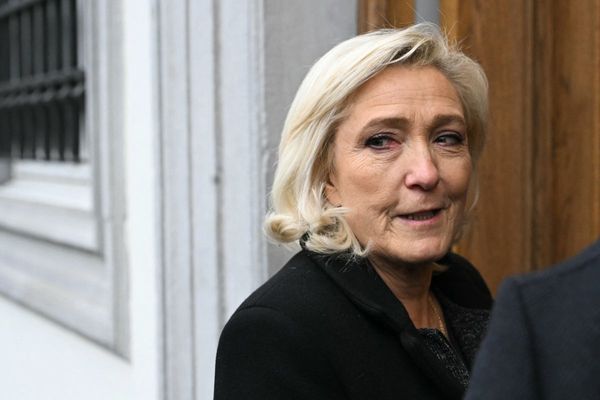
What drives art collectors? They often seem obsessive, driven to fill a mysterious lack, from Charles I, who amassed a hoard of Renaissance art that helped provoke his subjects to civil war, to Charles Saatchi, who had so many contemporary artworks he had to store them in a warehouse which caught fire. But there is also a mysterious category of collectors, such as John Soane and Rudolf II of Prague, who turn their collections into cabinets of curiosities haunted by their presence. Another of them was the 20th-century British collector Jim Ede.
The place Ede created is Kettle’s Yard in Cambridge, an open, spacious home formed by joining four ruinous cottages which he filled with his collection of modern art by the likes of Brâncuși, Gaudier-Brzeska and the Anglo-Welsh artist and poet David Jones. Today it’s known for its adjoining contemporary exhibition space, but next time you go, do yourself a favour and visit Ede’s museum-home, which is still preserved as the livable, relaxed yet artistically sublime little world it was when he gave it to Cambridge University in 1966.
Laura Freeman, art critic of The Times, tells me how she discovered it in her first week at university: “I found freshers’ week difficult, especially as I don’t drink.” Instead, the ethereal magic of the quiet, art-filled house across the road from her college entranced her. Now she has written the first proper biography of Ede and his collection, delving into one of the strangest stories in British art. As well as going deep in the archives she has interviewed more than 80 people who met the genius of Kettle’s Yard before he died in 1990 at the age of 95. “This was during lockdown, and these people in isolation were delighted to talk about him for hours on the phone”.

Yet the man she has exhumed is still an enigma, to me at least. Ede seems to have lived through the art he treasured. He was not so much a failed artist as someone who thought vaguely about becoming a failed artist. But he had a knack for collecting. As a child of religious Victorian parents in south Wales, he started a lifelong habit of searching for curvaceous pebbles. Freeman writes intimately about “Jim” – which was a name he gave himself: he was born Harold Stanley Ede. Yet he still comes across as not quite the hero of his own life. Instead, its heroes are the artists he adored, collected and in many cases befriended.
Asked about his experiences in the first world war, Ede told people to read Siegfried Sassoon’s Memoirs of An Infantry Officer because his own memories were not much different. His own war led him from the western front to Cambridge. As an officer in the trenches he was no coward, yet the stress and filth gave him such severe gut trouble he was invalided home and sent to teach student soldiers by the River Cam. Ede never went to university but his wartime dinners with dons made him fall in love with this rural-academic town where eventually, in the 1950s, he would buy Kettle’s Yard to house his collection.
The Great War haunts its pastoral calm. Jones, like Ede, survived the western front, and became one of its poets, transfiguring his memories of the Battle of the Somme in his epic In Parenthesis. Ede befriended Jones and often had him as a guest at his home: there’s really nowhere else that you can appreciate this poet’s art as you can here. Vexilla Regis, a depiction of a deep dark wood, refers to the ancient Romans and Arthur, but you can hear the distant artillery fire through the trees. It’s the Welsh answer to the German history painter Anselm Kiefer.
The other artist you can only really understand by visiting Kettle’s Yard never made it through the first world war. Henri Gaudier-Brzeska was French but became an avant garde artist in Britain before 1914 and was championed by Ezra Pound as a “vorticist”. He took the surname of his girlfriend, Sophie Brzeska, which has always struck me as attractively feminist, but Freeman explains it was just so they could cover their unmarried status – outrageous at the time – by posing as brother and sister.
Gaudier-Brzeska was killed in 1915, fighting in the French army at Neuville-St-Vaast. He was 23. And he might have been forgotten without some wheeler-dealing by Ede. As a Tate employee in the 1920s, Ede came across a hoard of Gaudier-Brzeska’s art and papers that had passed to the British state after the sculptor’s death. No one quite knew what to do with them. Ede saw his chance: he bought the stuff cheap, including Gaudier-Brzeska’s plaster models for sculptures he would never cast. It was a clever deal by a budding collector, writes Freeman. “But had he done wrong? By the Tate, by the Treasury, by the civil service … almost certainly yes.”

Yet he saved this great artist from oblivion. Ede’s book Savage Messiah is still the definitive work on Gaudier-Brzeska. Even in making money for himself by getting the artist’s plaster models cast into bronzes that he sold to museums, he enshrined them in the canon.
The original 1914 plaster version of Gaudier-Brzeska’s Bird Swallowing a Fish, painted green to resemble oxidised bronze, is for me the greatest work in Kettle’s Yard. Set among domestic objects there, like the most dangerous ornament in the world, it’s jarringly violent. A fat, squid-shaped, dead-eyed bird is digesting a fish with a tail in the shape of an artillery shell. Nature is as cruel here as Europe’s Great Powers, who mechanically marched into war in the year it was made.
Swallowed by history like fishes in the maw of Europe, Ede’s generation were driven to search for meaning in the ashes. Kettle’s Yard is the answer Ede found. It breathes a belief in art as something more than decor or depiction: it’s a home, yet also a kind of chapel.
Born in the Victorian age, Ede hated the pre-Raphaelites and found a truth in the abstract purity of artists such as Winifred and Ben Nicholson. For me, their version of the avant garde pales beside European contemporaries. But the charged atmosphere of the house gives even the most minor piece a quiet authority.
Ultimately this was a very moral, British attitude to art that was, despite itself, rooted in the Victorian age. The 19th-century critic John Ruskin argued that nature is the moral basis of all good art. In finding analogies between the hole the sea makes in a chalk pebble and the voids in a Barbara Hepworth sculpture, Ede’s generation rooted abstraction in a Ruskinian reverence for nature. Nowhere do you feel and understand that better than Kettle’s Yard, where Ede’s beloved pebbles are arranged to harmonise with the sculptures. Ede’s Puritan childhood never quite left him: Freeman tells how he was even shocked by Kenneth Clark’s book The Nude.
Ede’s life and home are a walk on the mild side. And yet his world, safely preserved behind old stone walls, is the very best of the 20th century.
• Ways of Life: Jim Ede and the Kettle’s Yard Artists by Laura Freeman is published on 18 May by Jonathan Cape, £30. Kettle’s Yard is open Tuesday to Sunday, prebook for house entry







